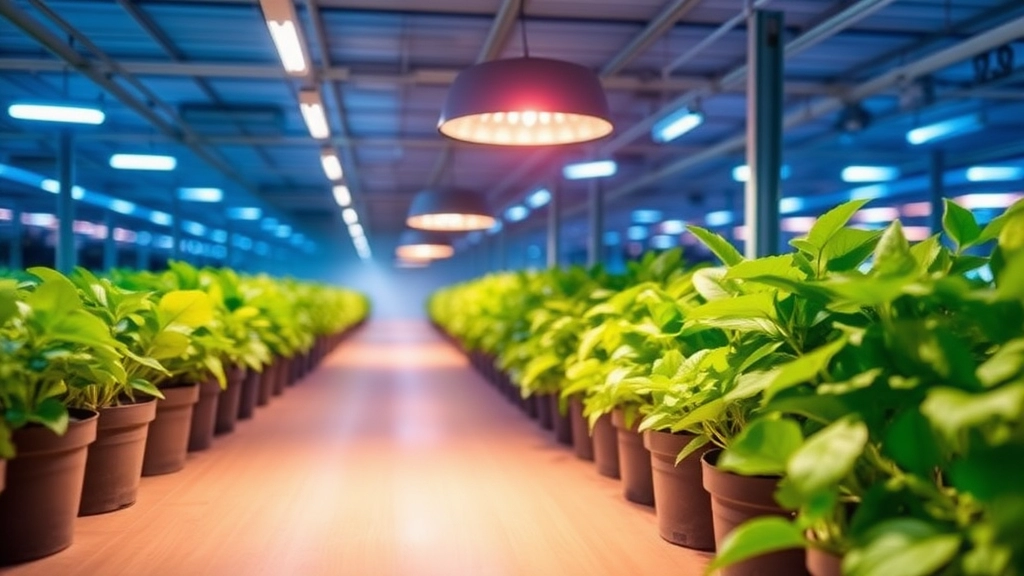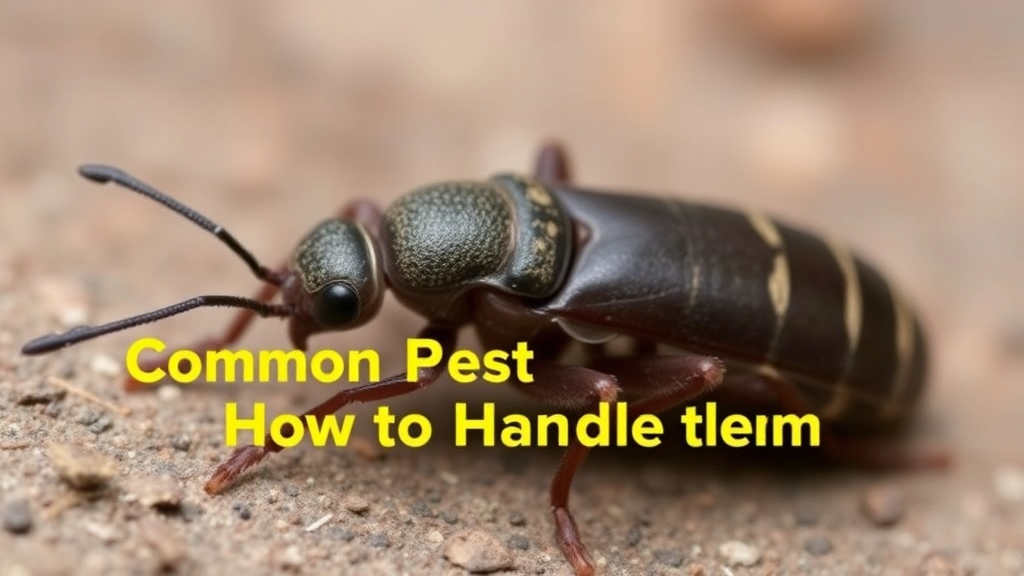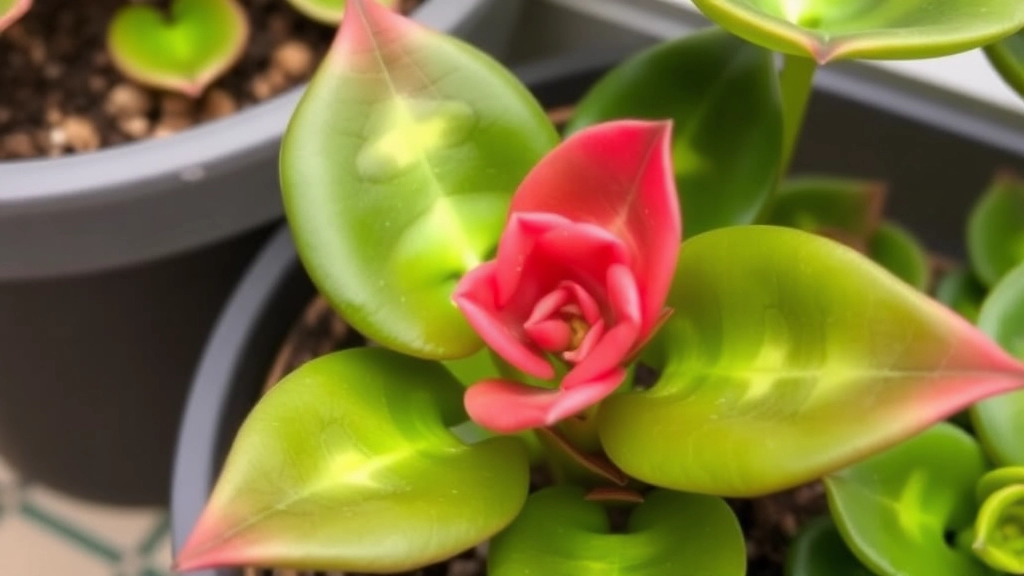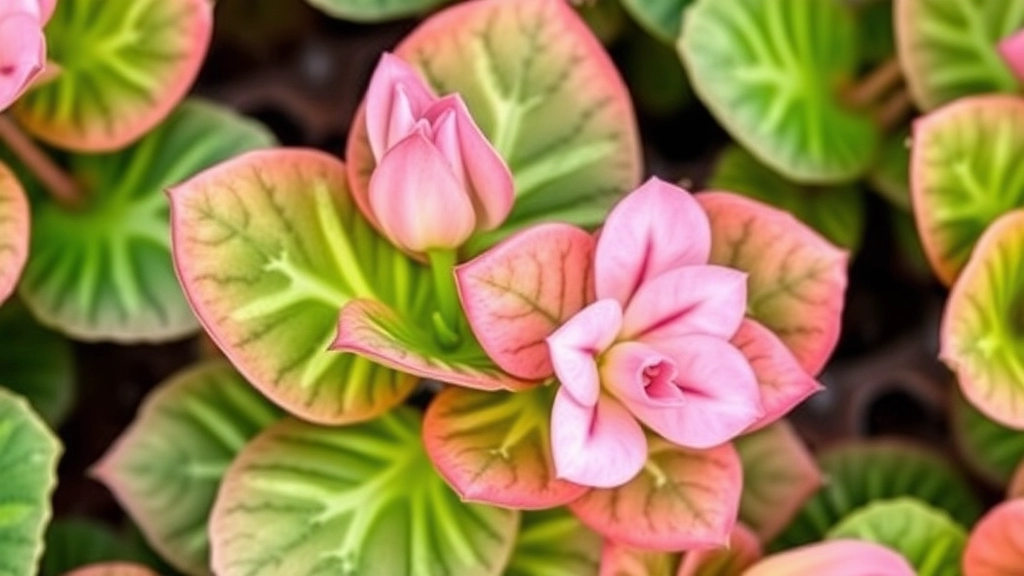Elephant Ear Kalanchoe: A Unique Addition to Your Plant Collection
If you’re looking to add a unique and low-maintenance plant to your collection, the Elephant Ear Kalanchoe is a fantastic choice. Known scientifically as Kalanchoe beharensis, this succulent stands out with its large, velvety leaves that resemble elephant ears. In this guide, I’ll share key tips on how to grow and care for this striking plant, ensuring it thrives in your home or garden.
Understanding Elephant Ear Kalanchoe Care
Understanding the basics of Elephant Ear Kalanchoe care is crucial for its health. From the best lighting conditions and watering schedules to soil preferences and propagation methods, I’ll cover everything you need to know. Whether you’re a seasoned plant enthusiast or a beginner, these simple guidelines will help you maintain a happy and healthy Elephant Ear Kalanchoe.
Key Characteristics of the Elephant Ear Kalanchoe
When considering adding a unique plant to your collection, the Elephant Ear Kalanchoe (Kalanchoe beharensis) might just be the perfect fit.
This succulent is known for its striking, large, ear-shaped leaves that can grow up to 30cm in length.
Distinctive Features
- Leaf Shape: The leaves are thick and fleshy, resembling the shape of an elephant’s ear, which gives the plant its name.
- Texture: They have a velvety texture with a grey-green hue, often featuring a slight sheen.
- Growth Habit: This species can reach heights of up to 1 meter, making it a standout in any indoor or outdoor setting.
- Flowers: In ideal conditions, the Elephant Ear Kalanchoe produces clusters of small, tubular flowers that bloom in vibrant yellow or orange hues.
These characteristics not only make the Elephant Ear Kalanchoe visually appealing but also contribute to its resilience as a low-maintenance succulent. For more detailed care instructions, check out our Elephant Ear Kalanchoe care and propagation guide. Additionally, if you’re interested in other unique varieties, you might find our top Kalanchoe succulent varieties and care tips helpful.
Best Lighting Conditions for Growth

So, you’ve got your Elephant Ear Kalanchoe, and you’re probably wondering: what’s the secret to keeping it happy and thriving?
Lighting is key!
These beauties love bright, indirect sunlight. Here’s a quick guide to help you nail the lighting conditions:
- Bright, Indirect Light: Place your Kalanchoe near a window where it can soak up the light without getting scorched.
- Avoid Direct Sun: Too much direct sunlight can cause those lovely leaves to burn. If you notice brown spots, it’s a sign to move it back a bit.
- Supplement with Grow Lights: If your space doesn’t get enough natural light, consider using grow lights. They can mimic sunlight and keep your plant happy.
Signs Your Kalanchoe is Happy:
- Vibrant, lush green leaves.
- Steady growth during the growing season.
Signs It Needs More Light:
- Stretching or leggy growth.
- Fading leaf colour.
In summary, the right lighting can make or break your Elephant Ear Kalanchoe.
When it comes to caring for your Elephant Ear Kalanchoe, watering is a crucial aspect that can make or break its health. You might be wondering, “How much water does my Kalanchoe really need?”
### Key Watering Principles
– **Drench and Dry Method**
Water thoroughly until it drains from the bottom of the pot.
Allow the soil to dry out completely before the next watering.
– **Frequency**
Generally, water every 2-3 weeks during the growing season (spring and summer).
Reduce frequency in the dormant months (autumn and winter).
– **Signs of Overwatering**
Yellowing leaves.
Soft, mushy stems.
A foul smell from the soil.
– **Signs of Underwatering**
Wrinkled, shrivelling leaves.
Leaf drop.
– **Water Quality**
Use room temperature water.
Rainwater or distilled water is ideal, as it avoids chemicals found in tap water.
Remember, the Elephant Ear Kalanchoe thrives on a careful balance. Too much water can lead to root rot, while too little can cause dehydration. For more detailed care tips, you might find the [complete care guide for Kalanchoe Beharensis](https://planthq.org/care-and-propagation-of-kalanchoe-beharensis-snowflake/) helpful. Additionally, if you’re interested in learning about other varieties, check out the [top fuzzy Kalanchoe types for your garden](https://planthq.org/top-fuzzy-kalanchoe-types-for-your-garden/).
Ideal Soil Types for Succulent Growth

When it comes to nurturing your Elephant Ear Kalanchoe, the right soil is crucial for promoting healthy growth. You might be wondering, what type of soil is best for succulents like Kalanchoe Beharensis?
Key Soil Characteristics
- Well-Draining: Succulents thrive in soil that allows excess water to escape. This prevents root rot, a common issue for these plants.
- Lightweight: A lighter soil mix helps with aeration, allowing roots to breathe and grow effectively.
- Nutrient-Rich: While succulents don’t require overly rich soil, a mix that provides essential nutrients can support overall health.
Recommended Soil Types
- Cactus Mix: Specifically designed for cacti and succulents, this mix usually contains sand, perlite, and peat moss for optimal drainage.
- Homemade Mix: You can create your own by combining:
- 2 parts potting soil
- 1 part perlite or pumice
- 1 part coarse sand
- Pre-Made Succulent Soil: Many garden centres offer pre-mixed succulent soils that are ready to use.
Additional Tips
- pH Level: Aim for a slightly acidic to neutral pH (around 6.0 to 7.0) for best results.
- Avoid Heavy Soils: Steer clear of garden soil or heavy potting mixes, as they retain too much moisture.
- Repotting: When repotting, always use fresh soil to provide your Kalanchoe with the best nutrients and drainage.
Temperature and Humidity Preferences
When caring for the Elephant Ear Kalanchoe, understanding its temperature and humidity preferences is crucial for fostering a thriving plant.
Ideal Temperature Range
This succulent prefers a warm environment, ideally between 21°C to 27°C (70°F to 80°F) during the day.
- Nighttime Temperatures: It can tolerate slightly cooler temperatures at night, ideally around 15°C to 18°C (59°F to 65°F).
- Cold Sensitivity: Be cautious of temperatures below 10°C (50°F) as this can cause stress and damage.
Humidity Levels
The Elephant Ear Kalanchoe thrives in low to moderate humidity levels, making it an excellent choice for indoor spaces.
### Fertilizing Tips for Healthy Growth
So, you’ve got your Elephant Ear Kalanchoe thriving, but how do you keep it looking its best? One key factor is the right fertilization. Many plant parents worry about overdoing it or not doing enough. Let’s break it down.
#### When to Fertilize
- Growing Season: Fertilize during spring and summer when your Kalanchoe is actively growing. This is when it needs that extra boost.
- Frequency: Aim for every 4-6 weeks. A little goes a long way!
#### What to Use
- Balanced Fertilizer: Look for a balanced, water-soluble fertilizer, like a 10-10-10 NPK. This ensures your plant gets a well-rounded diet.
- Dilution: Always dilute the fertilizer to half the recommended strength. This helps prevent root burn.
#### How to Apply
- Watering First: Water your plant a day before applying fertilizer. This helps the roots absorb nutrients better.
- Even Distribution: Apply the diluted solution evenly around the base of the plant, avoiding direct contact with the leaves.
#### Signs Your Kalanchoe Needs More Nutrients
- Pale Leaves: If the leaves start to look washed out, it might be time to up the nutrients.
- Stunted Growth: If your plant isn’t growing as it should, check your fertilization schedule.
#### Caution
- Over-Fertilizing: Too much can lead to salt build-up, which can harm your plant. Always err on the side of caution.
How to Propagate Elephant Ear Kalanchoe
If you’ve been enjoying your Elephant Ear Kalanchoe and are considering expanding your collection, propagation is a rewarding and straightforward process.
Methods of Propagation
- Leaf Cuttings
- Select a healthy leaf from the parent plant.
- Cut the leaf into sections, ensuring each piece has a vein.
- Allow the cuttings to dry for a few days until the cut edges callous over.
- Place the cuttings in well-draining soil, burying them slightly.
- Water sparingly until new growth appears.
- Offsets
- Look for small offsets or ‘pups’ at the base of the parent plant.
- Gently separate these pups from the main plant, ensuring they have roots.
- Plant them in their own pots with suitable soil.
- Water lightly and provide indirect sunlight until established.
- Stem Cuttings
- Cut a healthy stem just below a leaf node.
- Allow the cutting to dry for a few hours to form a callous.
- Plant the cutting in well-draining soil, ensuring it stands upright.
- Water minimally until roots develop.
Tips for Successful Propagation
- Timing: Spring or early summer is the best time for propagation.
- Environment: Keep the cuttings in a warm, bright area but out of direct sunlight to prevent scorching.
- Humidity: A humidity dome can help retain moisture for leaf cuttings, but ensure good air circulation to prevent rot.
By following these simple methods, you can easily propagate your Elephant Ear Kalanchoe and enjoy sharing them with friends or adding to your own collection. For more specific tips on stem propagation or if you’re interested in learning about the Mother of Thousands propagation techniques, check out our detailed guides.
Common Pests and How to Handle Them

So, you’ve got your Elephant Ear Kalanchoe thriving, but what happens when those pesky pests decide to crash the party?
Common Pests to Watch For:
- Mealybugs: These little white fluff balls love to hide in the leaf axils.
- Spider Mites: Tiny and hard to spot, they can cause webbing on your plant.
- Aphids: Small and green, they tend to cluster on new growth.
- Scale Insects: These look like small bumps on the stems and leaves.
How to Handle Them:
- Regular Checks: Make it a habit to inspect your plant weekly. Catching pests early makes a huge difference.
- Neem Oil: This natural pesticide works wonders. Just mix it with water and spray it on the affected areas.
- Insecticidal Soap: A safe option that can help eliminate pests without harming your plant.
- Wiping Leaves: Use a damp cloth to gently wipe down leaves. This not only removes pests but also dust that can hinder growth.
- Isolation: If you spot a pest, move your plant away from others to prevent spreading.
- Natural Predators: Ladybugs and lacewings can help keep pests in check. You can introduce them to your plant if you’re feeling adventurous!
Keeping pests at bay is crucial for the health of your Elephant Ear Kalanchoe. A little vigilance goes a long way.
Pruning and Shaping for Aesthetic Appeal
As we explore the care of the Elephant Ear Kalanchoe, pruning and shaping play a crucial role in maintaining its stunning appearance.
Why Pruning Matters
Pruning not only enhances the plant’s aesthetic appeal but also promotes healthy growth. Regular trimming helps to remove dead or damaged leaves, allowing the plant to focus its energy on new growth.
Potting and Repotting Considerations for Elephant Ear Kalanchoe

So, you’ve got your Elephant Ear Kalanchoe thriving, and now you’re wondering about potting and repotting. This is super important for keeping your plant happy and healthy.
When to Repot:
- Every 1-2 years: If you notice roots poking out of the drainage holes, it’s time for a bigger pot.
- Growth spurts: After a season of growth, your plant may need more space.
- Soil depletion: If the soil looks tired or compacted, a refresh is in order.
Choosing the Right Pot:
- Size matters: Go for a pot that’s 1-2 inches larger in diameter than the current one.
- Drainage is key: Make sure there are holes at the bottom to prevent water logging.
- Material: Terracotta is a great choice as it allows for breathability.
Repotting Steps:
- Water your plant: A day before repotting, give it a good drink. This helps reduce stress.
- Gently remove the plant: Take it out of its current pot. Don’t yank; instead, wiggle it free.
- Inspect the roots: Trim any dead or mushy roots. Healthy roots should be firm and white.
- Add fresh soil: Place a layer of succulent soil mix in the new pot.
- Position the plant: Center it in the pot and fill in around the edges with more soil.
- Water lightly: After potting, give it a small drink. Don’t soak it right away.
Aftercare:
- Avoid direct sunlight: Keep your newly repotted plant in a shaded area for a week or so to help it settle.
- Monitor moisture: Check the soil moisture regularly. It may take a bit for the roots to adjust.
Seasonal Care Tips: Winter vs. Summer
Caring for your Elephant Ear Kalanchoe, or Kalanchoe Beharensis, varies significantly between the winter and summer months. Understanding these seasonal differences is essential for maintaining its vibrant health.
Winter Care
During winter, your Kalanchoe will enter a period of dormancy. This means it requires less attention. Here are some key tips for winter care:
- Reduce Watering: Water less frequently, allowing the soil to dry out completely between waterings. Overwatering during this time can lead to root rot.
- Maintain Temperature: Keep your plant in a warmer environment, ideally between 15°C to 20°C. Avoid placing it near cold drafts or heating vents.
- Limit Fertilizer: Hold off on fertilising until spring. The plant won’t actively grow, so additional nutrients are unnecessary.
Summer Care
As the temperatures rise, your Kalanchoe will thrive. Here’s how to care for it during the summer:
- Increase Watering: Water more frequently, ensuring the soil remains moist but not soggy. A good rule of thumb is to water when the top inch of soil feels dry.
- Optimal Light Exposure: Ensure your plant receives plenty of bright, indirect sunlight. This will promote healthy growth and vibrant leaves.
- Fertilise Regularly: Feed your Kalanchoe with a balanced, diluted fertiliser every four to six weeks to support its active growth.
For more detailed information on caring for Kalanchoe Beharensis, you can refer to our comprehensive care guide. Additionally, if you’re interested in propagating other types of Kalanchoe, check out our step-by-step propagation guide.
So, you’ve got your Elephant Ear Kalanchoe thriving, and now you’re curious about its flowering habits.
When can you expect those beautiful blooms to show up?
### Bloom Season
The Elephant Ear Kalanchoe, or Kalanchoe Beharensis, typically flowers in late winter to early spring.
Here’s what you need to know:
– **Timing**: Expect blooms around February to April.
– **Flowers**: The flowers are small and tubular, often in shades of yellow or orange.
– **Duration**: The blooming period can last several weeks, adding a splash of colour to your indoor or outdoor space.
### Conditions for Flowering
Want to encourage those lovely flowers? Here are some tips:
– **Light**: Ensure your plant gets plenty of bright, indirect sunlight.
– **Temperature**: Keep it warm, ideally between 20-25°C (68-77°F).
– **Stress**: A little stress can actually help! Allow the soil to dry out between waterings to promote blooming.
### Fertilizing for Flowers
Feeding your Kalanchoe can also boost its chances of flowering:
– **Frequency**: Fertilise every 4-6 weeks during the growing season.
– **Type**: Use a balanced, water-soluble fertiliser diluted to half strength.
### What to Expect
As you care for your Kalanchoe, you might notice:
– **Bud Formation**: Small buds will start to appear before they bloom.
– **Fading Flowers**: Once the blooms fade, don’t worryâthis is normal!
For more detailed care instructions, you might find the [complete guide to Kalanchoe plant care](https://planthq.org/complete-guide-to-kalanchoe-plant-care/) helpful. Additionally, if you’re interested in another variety, check out the [care guide for Kalanchoe Pink Butterflies](https://planthq.org/complete-care-guide-for-kalanchoe-pink-butterflies-succulent/).
FAQs on Elephant Ear Kalanchoe
What are the best lighting conditions for Elephant Ear Kalanchoe?
Elephant Ear Kalanchoe thrives in bright, indirect sunlight. Avoid direct sun as it can cause leaf burn. If natural light is insufficient, consider using grow lights.
How can I tell if my Kalanchoe is getting enough light?
Signs of a happy Kalanchoe include vibrant, lush green leaves and steady growth. Signs it needs more light include stretching or leggy growth and fading leaf color.
What type of soil is best for Elephant Ear Kalanchoe?
Well-draining, lightweight, and nutrient-rich soil is ideal. Cactus mix or a homemade mix combining potting soil, perlite or pumice, and coarse sand works well.
How often should I fertilize my Kalanchoe?
Fertilize during the growing season (spring and summer) every 4-6 weeks. Use a balanced, water-soluble fertilizer diluted to half the recommended strength.
What are common pests that affect Elephant Ear Kalanchoe and how can I handle them?
Common pests include mealybugs, spider mites, aphids, and scale insects. Regular checks, neem oil, insecticidal soap, wiping leaves, and isolation can help manage these pests.
When and how should I repot my Elephant Ear Kalanchoe?
Repot every 1-2 years or when you see roots poking out of drainage holes. Choose a pot 1-2 inches larger in diameter with good drainage. Water the plant a day before repotting, gently remove it, inspect the roots, and use fresh soil.
What should I do after repotting my Kalanchoe?
Keep the newly repotted plant in a shaded area for a week to help it settle. Monitor soil moisture regularly as the roots adjust to the new pot.
How do I know if my Kalanchoe needs more nutrients?
Pale leaves and stunted growth are signs your Kalanchoe might need more nutrients. Adjust your fertilization routine accordingly.
What precautions should I take to avoid over-fertilizing?
Over-fertilizing can lead to salt build-up, which can harm your plant. Always err on the side of caution and dilute the fertilizer to half the recommended strength.
What are the key characteristics of good soil for Kalanchoe?
Good soil should be well-draining, lightweight, and slightly acidic to neutral (pH around 6.0 to 7.0). Avoid heavy soils that retain too much moisture.
References
-
Gardening Know How: Best Lighting Conditions for Kalanchoe Elephant Ear
-
The Spruce: Ideal Soil Types for Succulent Growth
-
Gardener’s Supply Company: Fertilizing Tips for Healthy Succulent Growth
